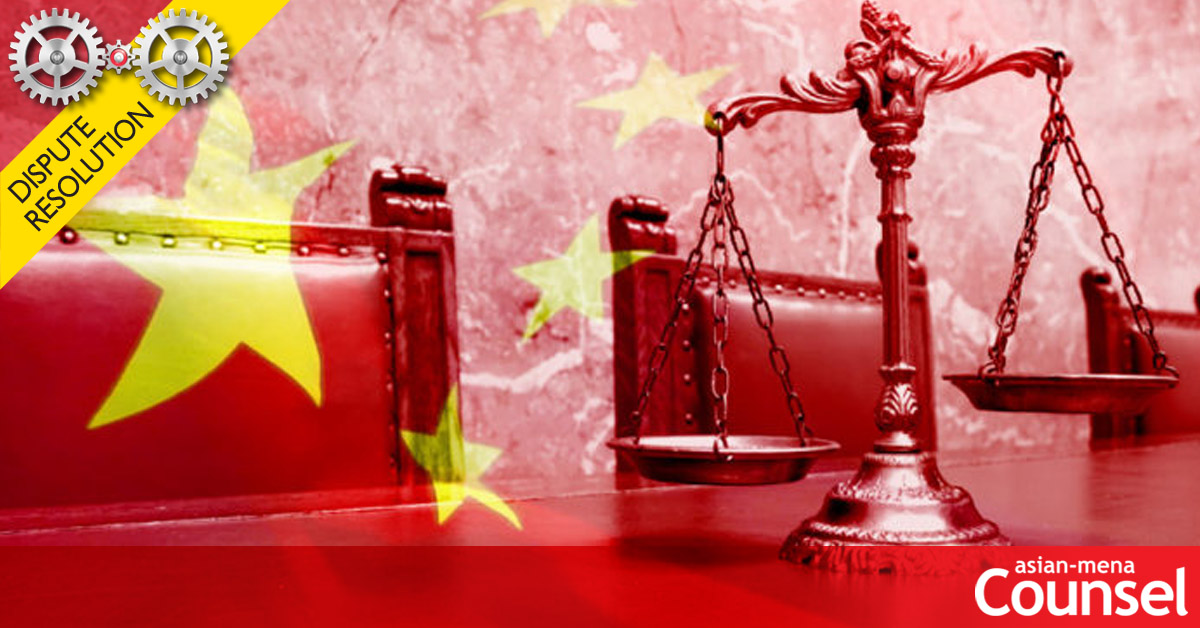
On April 23, the Standing Committee of National People’s Congress issued the Decision of Revision of Eight Laws, which includes the fourth revision of the PRC Trademark Law (the “TML”).
The revision attracted wide attention from the international IP communities as it addressed the bad-faith trademark registration issue, one of the most significant challenges to trademark protection of international brands in China. In addition, On April 24, the Beijing High Court issued comprehensive and broad guidelines for Authorization and Confirmation of Trademark (the “Guidelines”). The following is a discussion and analysis related to bad faith application on the Guidelines.
I. Regulation against Bad Faith Application and Registration
New Articles of TML
Provision for rejecting bad faith application and registration without intent-to-use (NITU)
Article 4 Natural persons, legal persons or any other organizations that need to obtain exclusive rights to use trademark for their commodities or services in the course of their manufacturing and business activities shall apply to a trademark bureau for trademark registration. Any application for trademark registration that is malicious and is not filed for the purpose of use shall be rejected [1].
Bad faith application without intent to use shall be regarded as a legal ground for opposition and invalidation
Article 33 A prior right holder or a stakeholder who holds that a preliminarily validated and gazetted trademark violates the provisions of the second and third paragraphs of Article 13, Article 15, the first paragraph of Article 16, Article 30, 31 or Article 32 of this Law, or any person who held that a preliminarily validated and gazetted trademark violates the provisions of Article 4, 10, 11, 12 or 19.4 of this Law may raise an objection to the trademark bureau within three months from the date of gazette. Where no objection is raised during the gazette period, the trademark shall be registered, a trademark registration certificate shall be issued and the registered trademark shall be gazetted.
Article 44.1 Where a registered trademark violates the provisions of Article 4, 10, 11 or 12 of this Law, or the fourth paragraph of Article 19.4 of this Law, or the registration is obtained by fraudulent means or other improper means, the registered trademark shall be invalidated by the trademark bureau; any other organization or individual may request that the trademark review and adjudication board declares the said registered trademark invalid.
*Comments by Charles Feng
(1) Under the first-to-file principle of the current Trademark Law of China, a party who first files an application will be granted registration. As a result, a large number of preemptive registrations were filed for the purpose of free-riding the reputation of brand owners. In addition, “trademark blockers” registered marks with the intent to sell the marks to brand owners or other third parties for future profits.
The added provisions clearly provide that the bad-faith applications without intent to use shall be rejected. In addition, the absence of requisite intent to use was included as grounds for opposition and invalidation proceeding, specifically as follows:
a) Requirement of the intent to use of the mark as a principle
When an application is filed without intent to use and in bad faith, it shall be rejected or invalidated.
b) Bad faith application without intent to use is regarded as an absolute grounds in opposition examination
Article 33 of revised Law procedurally provided bad faith application of non-intent to use (“NITU”) as a ground for opposition. It specifically provided two situations, Article 4 which requires intent to use (“ITU”) and Article 19 which prohibits the application by a trademark agent out of scope of its service, as absolute grounds for rejection decision in opposition procedure. As a result, any person, without restriction to the relevant parties, are authorized to file the opposition accordingly.
The Article 44.1 of revised Law procedurally provided bad faith application of non-intent to use (“NITU”) as a ground for invalidation. It specifically provided two situations, Article 4 which requires the intent to use (“ITU”) and Article 19 which prohibits the application of mark by a trademark agent out of scope of its service, as absolute grounds for such invalidation. As a result, any person, without restriction to the relevant parties, are authorized to file invalidation accordingly.
c) Consequently, any person, according to Article 4 and other related provisions, is authorized to file invalidation. Moreover, the invalidation on the basis of Article 4 will not be subject to the five year statutory limitation, which means any person will be authorized to file the invalidation even after five years from the date of the registration.
(2) The provision focuses on the prohibition against the bad faith applications without intent to use in large numbers and for profits by storage and transfer. It does not prohibit defensive applications made by brand owners for bona fide purpose.
(3) Firstly, according to the Interpretation on Draft of Revision made by State Council, Article 4 aims to constrain bad faith applications and registrations for the purpose of trademark storage and transfer. Secondly, the revision made during the review of National People Congress added the expression of “bad faith” applications in addition to “without intent to use”, which not only confirmed the intention to use but also reflected the opinion of NPC legislators that the legitimacy of defensive application even without the intent to use should not be rejected at the stage [i]. Therefore, the defensive applications made by brand owners should not be prohibited by the provision.
(4) Duty of trademark agent to be attentive and not to represent bad faith application, or otherwise will be penalized.
The New Guidelines for the Trial of Cases on Trademark Authorization and Affirmation (the “Guidelines”) specifies what constitutes bad faith application without intent to use
Article 7.1 of Guidelines for the Trial of Cases on Trademark Authorization and Affirmation (the “Guidelines”) provides that Where it is clear that the applicant does not hold true intent to use and meets one of the following circumstances, the applicant shall be held as violating Article 4 of Trademark Law:
(1) Applying for registrations of the marks identical with or similar to those marks with certain famousness and relatively high distinctiveness that belong to various entities and in serious circumstance.
(2) Applying for registrations of the marks identical with or similar to those marks with certain famousness and relatively high distinctiveness that belong to various entities, and in serious circumstance.
(3) Applying for registrations of the marks identical with or similar to other commercial signs than marks, and in serious circumstance.
(4) Applying for registrations of the marks identical with or similar to famous name of place, scenic spot, building and others with certain famousness, and in serious circumstance.
(5) Applying for registrations of the marks at large amount without appropriate reasons.
Where the trademark applicant mentioned above claims that it has true intent to use but fails to provide evidence, the claim shall be dismissed.
*Comments by Charles Feng
(1) The Guidelines provides five specific circumstances which shall be deemed bad faith application as provided in Article 4 of Trademark Law.
(2) The first paragraph identifies trademark squatters who apply for marks identical to or similar with the marks owned by multiple brand owners and in serious circumstance; The second paragraph identifies trademark squatters who apply for marks identical to or similar with the marks owned by one single brand owner and in serious circumstance.
(3) The issue remaining unclear is how to define “serious circumstance”. In the past, there were cases in which limited number of trademarks were found to have violated Article 44.1 ( then Article 41.1) See Facebook v. TRAB; American Chamber of Commerce v. TRAB, etc. In those cases, the brand owners prevailed on the grounds that the registrations disturbed the trademark management and fair competition order, which implies the violation to public interests rather than interests of specific brand owner under Article 44.1. Therefore, whether the serious circumstance will be interpreted as reference to public interests as in Article 44 needs to be confirmed.
(4) Difference between application without intent to use and the application for free-riding reputation of other brands
As discussed, the rampant trademark squatting in China can be generally divided into two categories. The first, applications made for profits by transfer of those registrations and, the second, applications made for USE but for free-riding of reputation of others. Article 4 and current Guidelines appear to focus more on the former situation than the latter, which suggests that if a brand owner seeks remedies against those trademark squatting for free-riding reputation of other brands, it is questionable whether it can rely on the new Article 4.
New Articles of TML
Legal liability of trademark agency representing the bad faith application without intent to use.
The fourth paragraph added to Article 19.3 reads Article 19.3.4 Where a trademark agency is or should be aware that the trademark to be registered by the entrusting party falls under the circumstances stipulated in Article 4, 15 or 32 of this Law, it shall not accept the entrustment.
Legal liability of trademark agency representing the bad faith application without intent to use.
The third paragraph added to Article 68.1 reads, the violation of the provisions of Article 4 of this Law or the third and fourth paragraphs of Article 19 of this Law. As a result, the trademark agencies who handle the applications can be penalized with fines or warnings by enforcement agencies.
*Comments by Charles Feng
The Article provides that the bad faith applications, the representation of bad faith applications by trademark agents as well as well as bad faith litigations shall be administratively penalized and judicially sanctioned.
Legal liability of applicants of the bad faith application without intent to use.
The fourth paragraph added as Article 68.4, reads Whoever maliciously applies for trademark registration shall be subject to a warning, a fine or any other administrative punishments, as the case may be; and whoever maliciously lodges a trademark lawsuit shall be penalized by the People’s Court according to law.
*Comments by Charles Feng
(1) The revision is the first time that the Law provides sanction against bad faith litigation.
(2) The revision appears to be vague about which entities would be subject to the administrative penalties and judicial sanctions. Specifically, the language used in the 68.4 appears to refer to applicants [ii]. Therefore the issues need to be clarified by further legal documents, such as Implementing Rule.
II. Increase the Penalty for Trademark Infringement
New Articles of TML
The increase in amount of damages on intentional trademark infringement
Article 63 The amount of damages for infringement on the exclusive right to use a trademark shall be determined based on the actual loss suffered by the right holder as a result of the infringement; if it is difficult to determine the actual loss, the amount of damages may be determined according to the proceeds gained therefrom by the infringer, if it is difficult to determine both the loss of the right holder and the proceeds gained by the infringing party, the amount of damages may be reasonably determined by reference to the multiples of the trademark royalties. Where an infringer maliciously infringes upon another party’s exclusive right to use a trademark, in the case of serious circumstances, the amount of damages may be determined as not less than one time but not more than five times the amount that is determined according to the aforesaid methods. The amount of damages shall cover the reasonable expenses paid by the right holder for stopping the infringing act.
Where it is difficult to determine the actual loss suffered by the right holder as a result of the infringement, the proceeds gained by the infringer from the infringement or the royalties of the registered trademark concerned, the people’s court shall render a judgment awarding damages in an amount not more than RMB five million based on the circumstances of the infringing acts.
*Comments by Charles Feng
(1) The revisions further increase the amount of damages which may be claimed. Specifically, the calculation of damages on the basis of reference to the multiples of the trademark royalties was increased from 1-3 times to 1-5 times the amount of royalties. The highest amount of statutory damages was increased from no more than RMB 3 Million to RMB 5 Million.
(2) The increase of damages aims to deter infringements.
Destruction of counterfeit products as well as the materials and tools used for the manufacture of related products.
New Articles of TML
Added paragraph 4 to the Article 63:
The People’s Court hearing a trademark-related dispute shall, as requested by the right holder, order to destroy the commodities bearing a counterfeited registered trademark, with the exception of special circumstances; for the materials and tools mainly used to manufacture the commodities bearing a counterfeited registered trademark, the People’s Court shall order to destroy them, without any compensation; or in particular cases, the People’s Court shall prohibit the said materials and tools from entering commercial channels, without any compensation.
The commodities bearing a counterfeited registered trademark shall not enter commercial channels even though they do not bear the said trademark any longer.
*Comments by Charles Feng
(1) The destruction of infringing products as well as the manufacturing tools has long been an unresolved issue. The legal revision is one big step forward on this issue. However, it is foreseeable that there will be disagreements about whether an infringing product constitutes counterfeit or imitation of famous brands.
(2) In the past, there have been cases in which courts remove the trademark labels and sell off the goods via auctions. As a result, there have been concerns that the infringing products may re-enter the circulation channel due to the absence of supervision procedures for the auction. The revision specifically provides the destruction of counterfeit products and requirement to prevent counterfeit products from re-entering distribution channel.
(3) With regard to the manufacturing tools, there have been legal challenges as to whether the courts are authorized to destroy tools and materials of the manufacturer when the brand owners seek to destroy major manufacturing tools, such as molds, because the return of those tools to infringer will facilitate the resumption of infringements easily.
The revision addresses the issue of destruction of materials and tools that are mainly used for the manufacturing infringing products and, thus, exert certain deterrence against repeated infringements.
[1] The provisions or parts newly added according to the revision were put in bold letters.
[i] There have been discussions whether the defensive application without use should also survive regardless of the three year non-use test, but most legislators have not expressively supported this point.
[ii] According to Zhao Gang, Vice Director General of CNIPA, in a press release of the new Trademark Law on 2019/4/28, the provision refers to penalties against applicants of bad faith registrations rather than agents.
For more information and queries on the bidding submission, please contact the key contact person(s).

Charles Feng, Partner Mr. Feng is a reputable IP and cyber law expert with substantial experience on intellectual property law, cyber law and anti-trust law with International law firm and Chinese law firms, focusing on IP litigation, enforcement trademark and patent portfolio management, as well as cyber law related legal matters. Charles_feng@east-concord.com |
![]()
East & Concord Partners
20/F Landmark Building Tower 1, 8 Dongsanhuan Beilu, Chaoyang District, Beijing, P. R. China 100004
en.east-concord.com










 East & Concord Partners
East & Concord Partners Jennifer Zhang
Jennifer Zhang Dorothy Xing
Dorothy Xing Lei Zhang
Lei Zhang Chaoyi Ji
Chaoyi Ji







